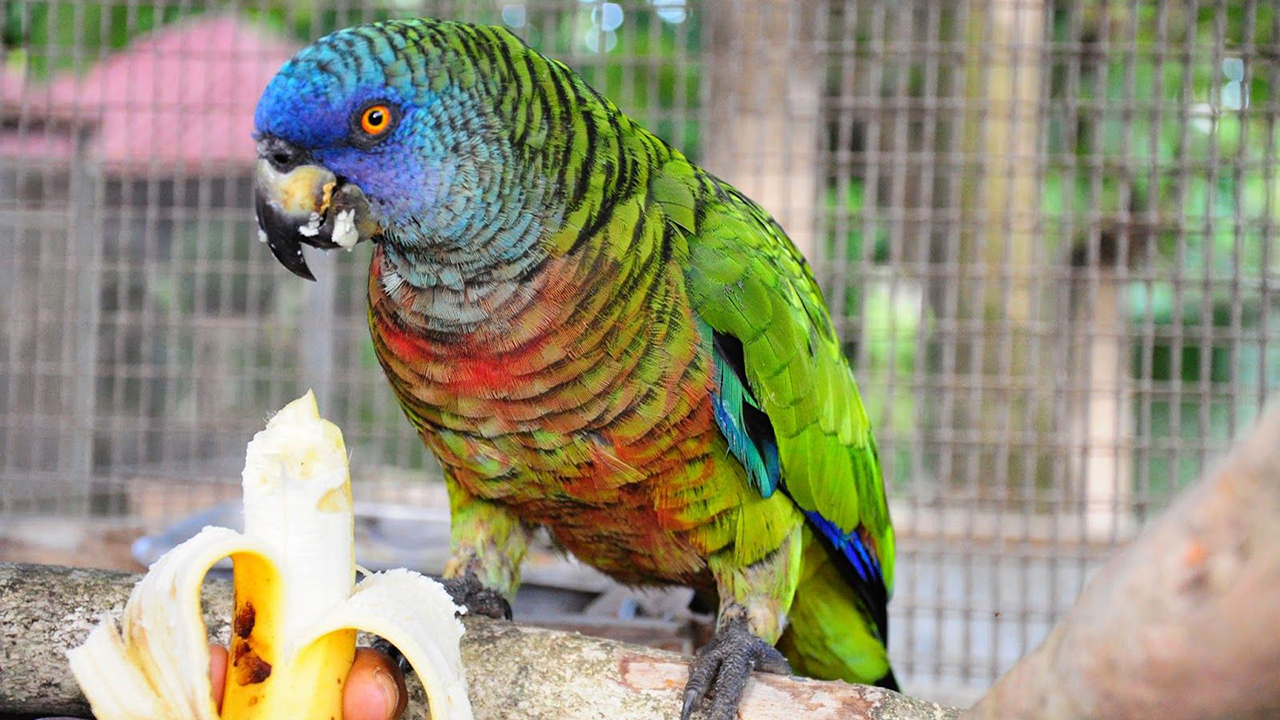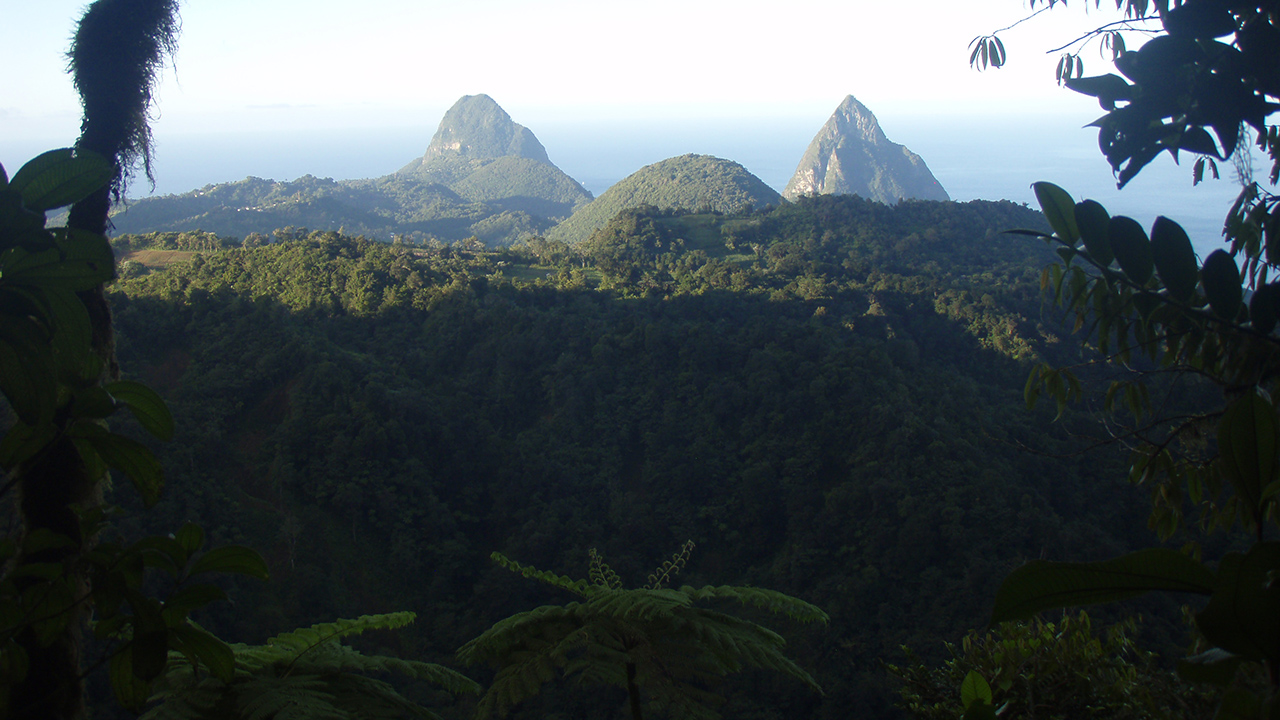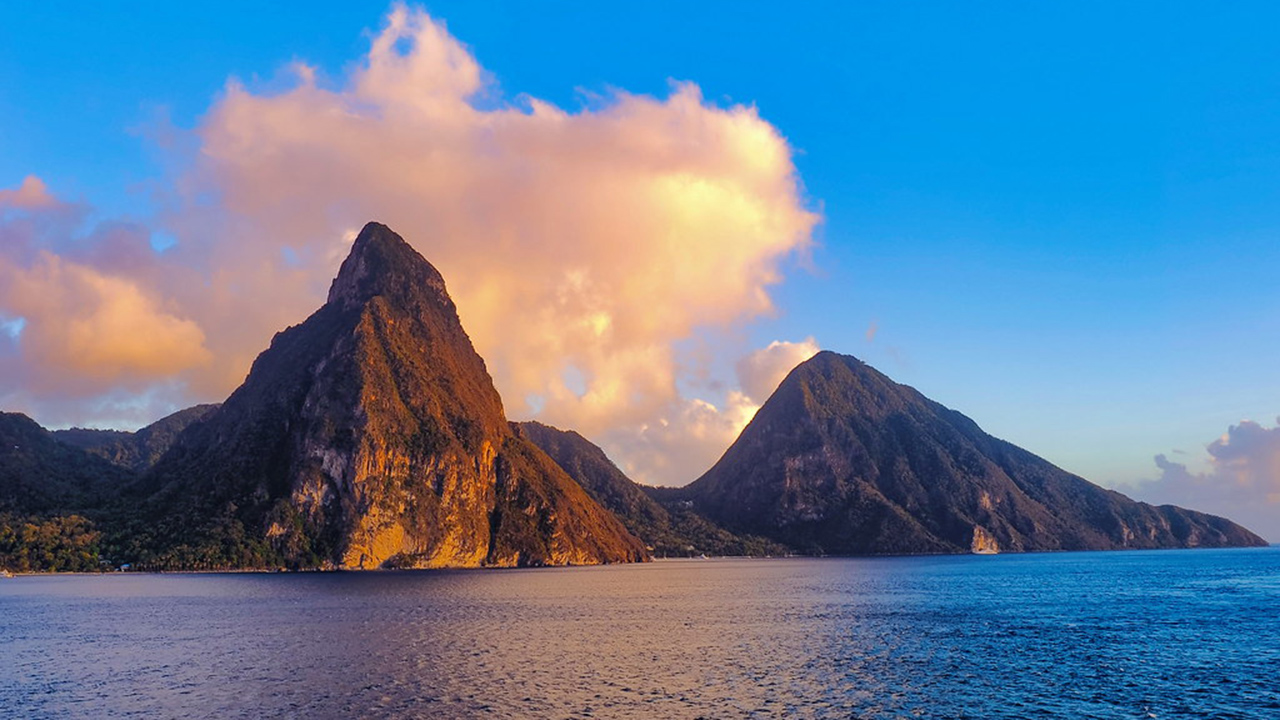St. Lucia is a beautiful and scenic island located in the Eastern Caribbean. There are spectacular mountains, rivers, forest and exotic wildlife which make this island excellent for adventurers. There are also many gorgeous beaches for the beach lovers.
Fun facts about St. Lucia
Saint Lucia is the world’s only country named after a woman.
St. Lucia gained independence from the British on February 22, 1979.
National flag of St.Lucia and what is symbolizes

The blue represents the sea and sky. The yellow represents the sunshine and prosperity. The black and white represent the influences of the different cultures. The triangles represent the Piton mountains.
Saint Lucia’s currency is the East Caribbean Dollar, a regional currency shared among members of the Eastern Caribbean Currency Union .
National dish is green fig and saltfish.

National bird is St. Lucia amazon also known as St. Lucia parrot (Amazonia versicolor).

English is the official language of Saint Lucia, however Saint Lucian Creole French (Kwéyòl) or Patois is spoken by 95 percent of the population.
St. Lucia is of volcanic origin. Mount Gimie is the island’s highest point at 3145 feet.

Two other mountains form the Pitons, St. Lucia’s most famous landmark and UNESCO World Heritage Site.

The St. Lucia Jazz Festival each May attracts visitors and musicians from around the world. The Festival’s grand finale takes place on Pigeon Island, located north of the main island of St. Lucia.
With two Nobel prize winners, St. Lucia boasts the world’s second highest ratio of Nobel laureates compared to the total population. Sir Arthur Lewis won the Nobel Prize in Economics in 1979, and poet Derek Walcott received the Nobel Prize in Literature in 1992.
